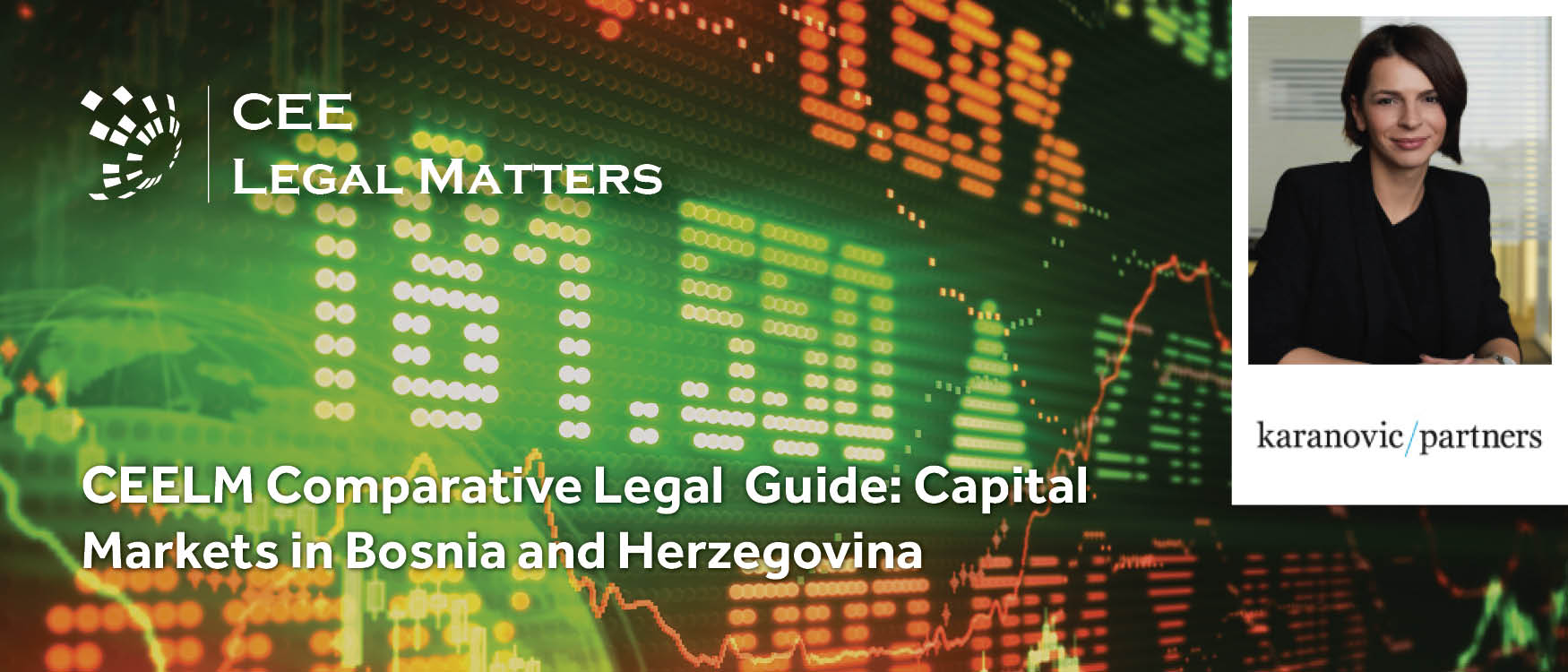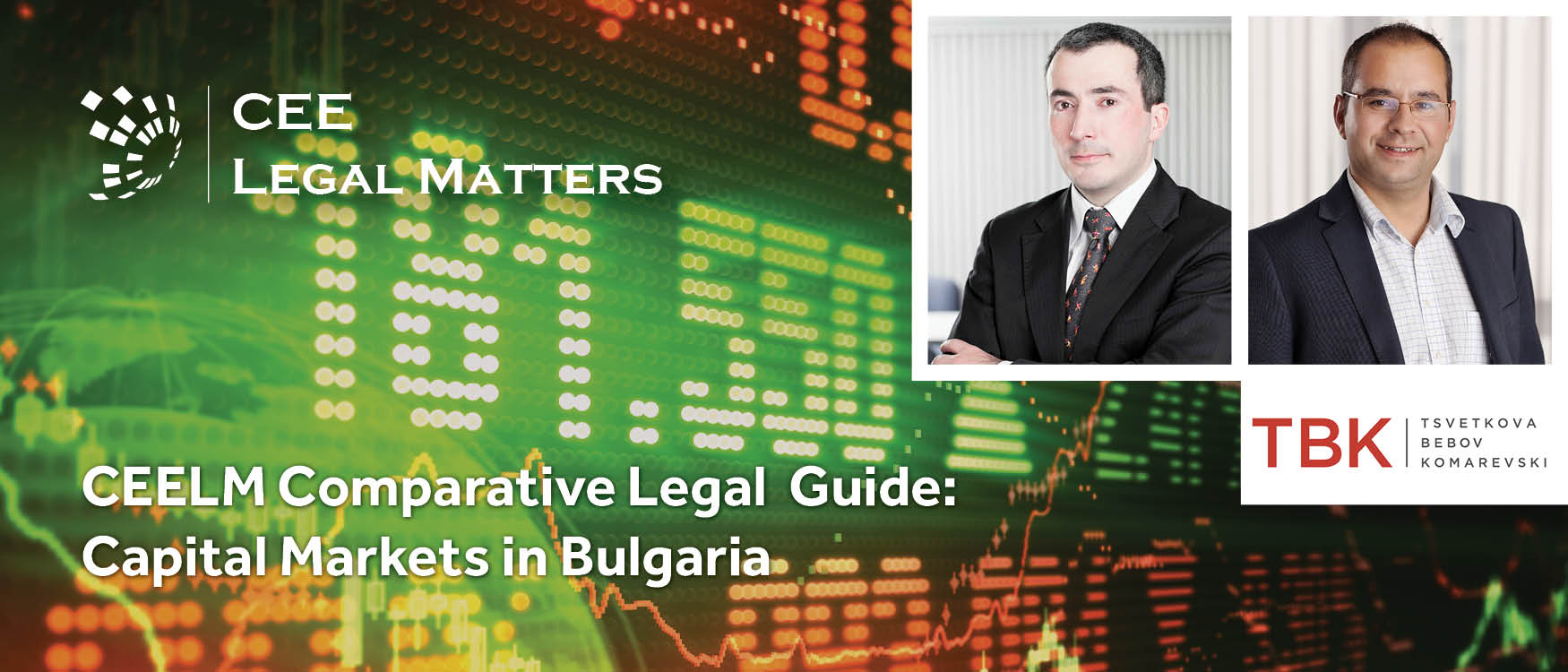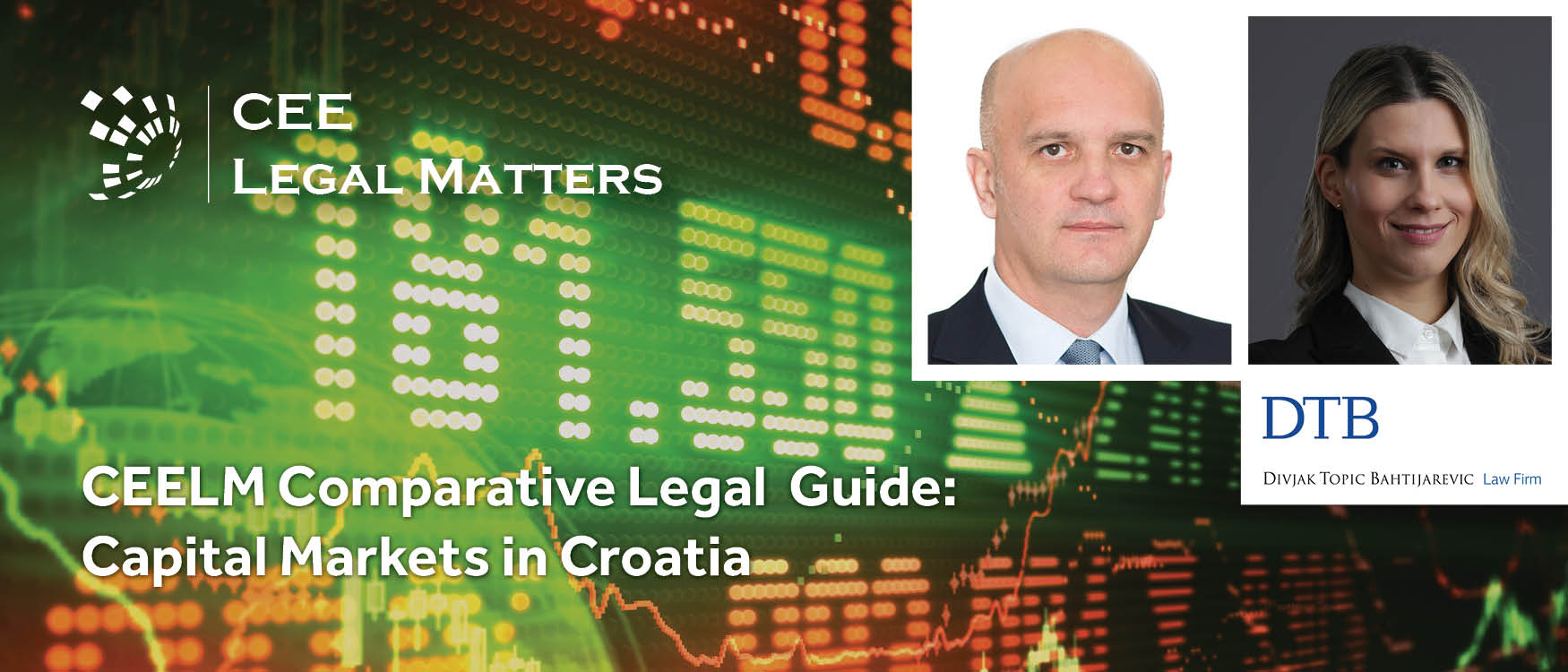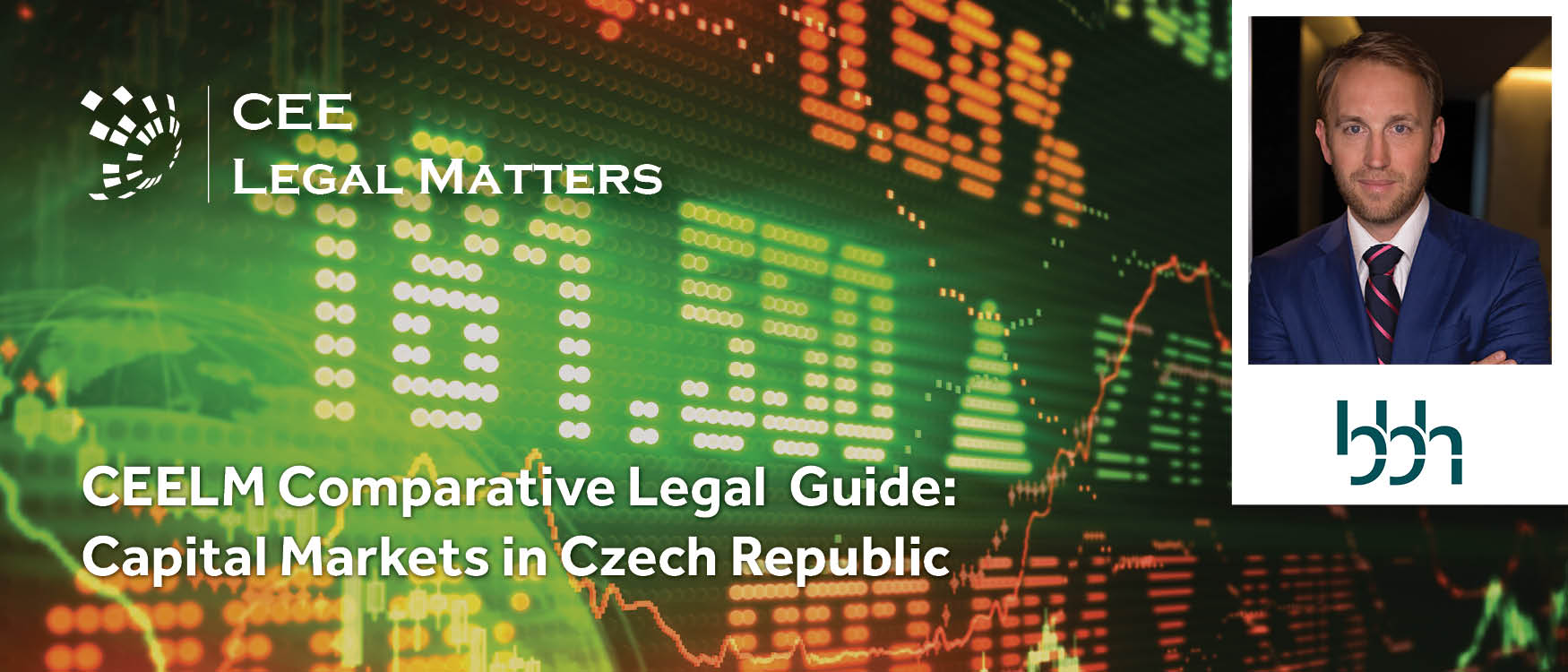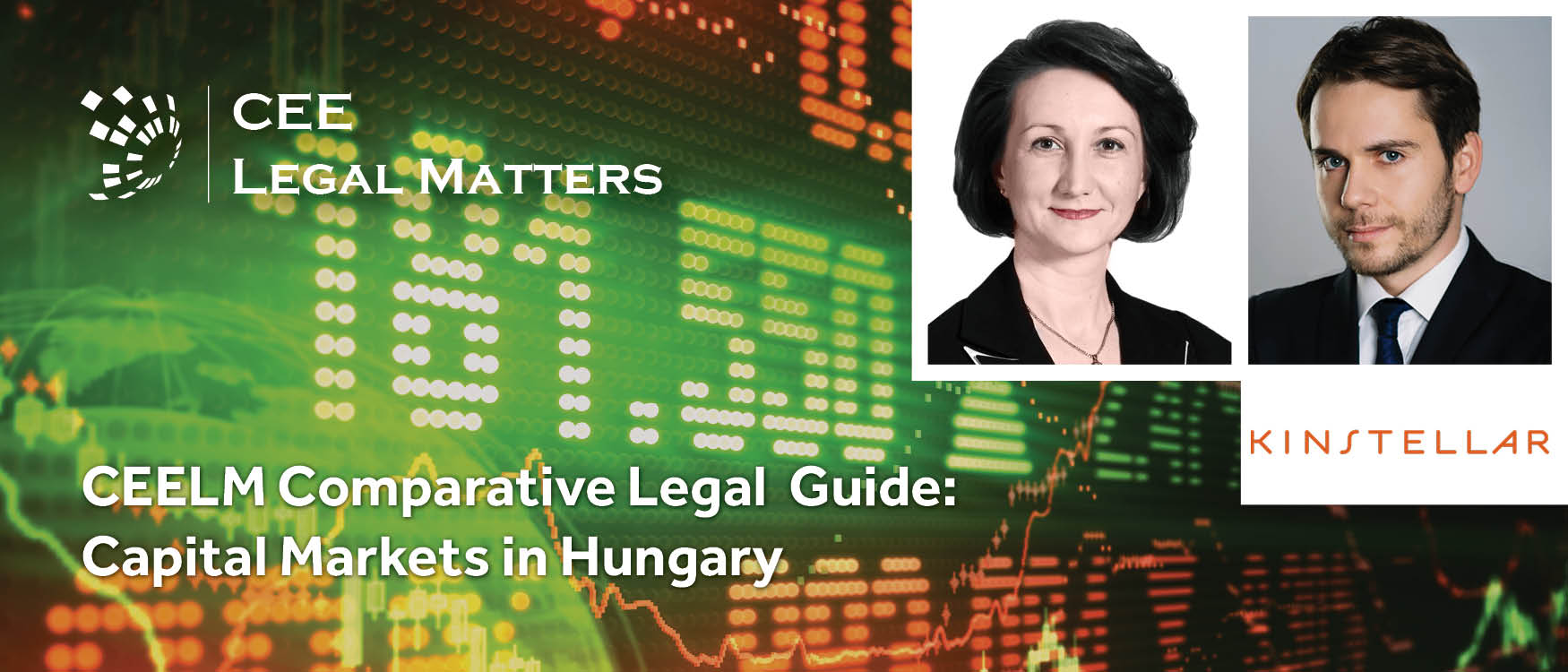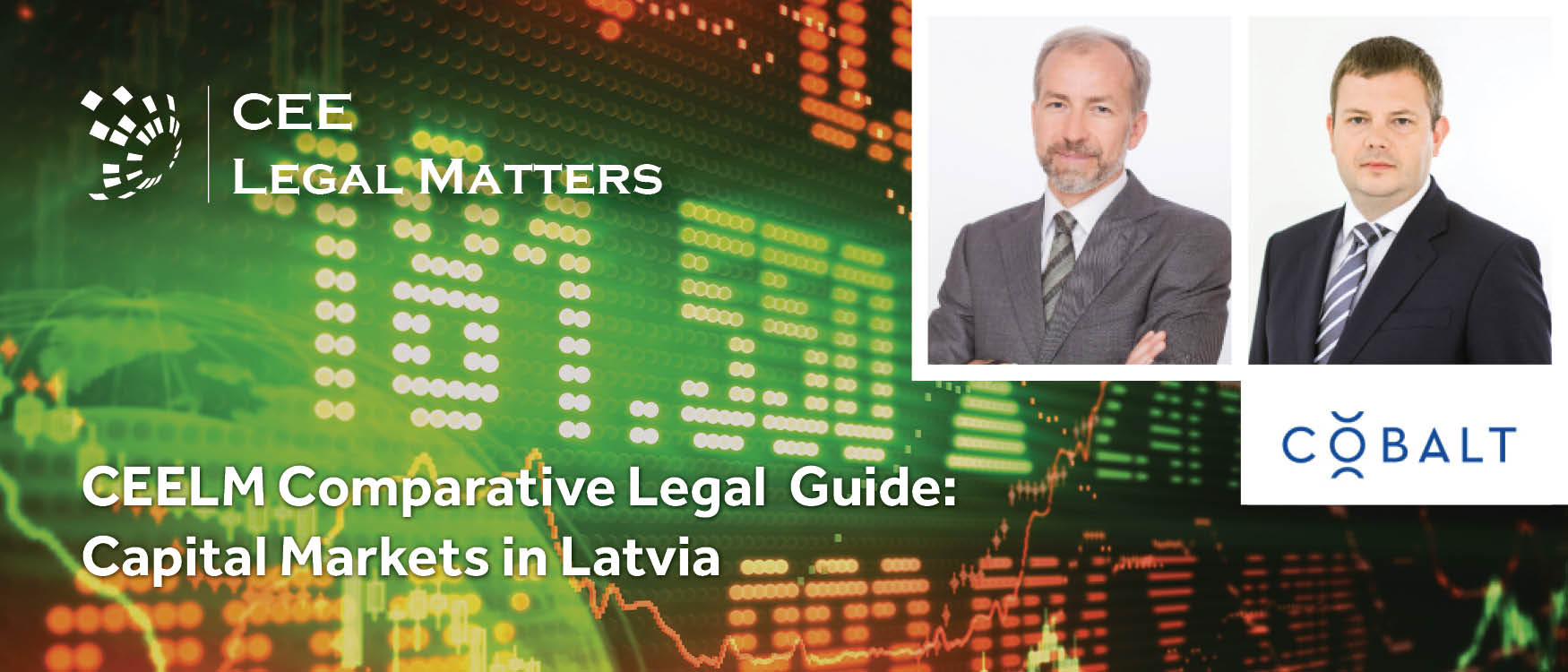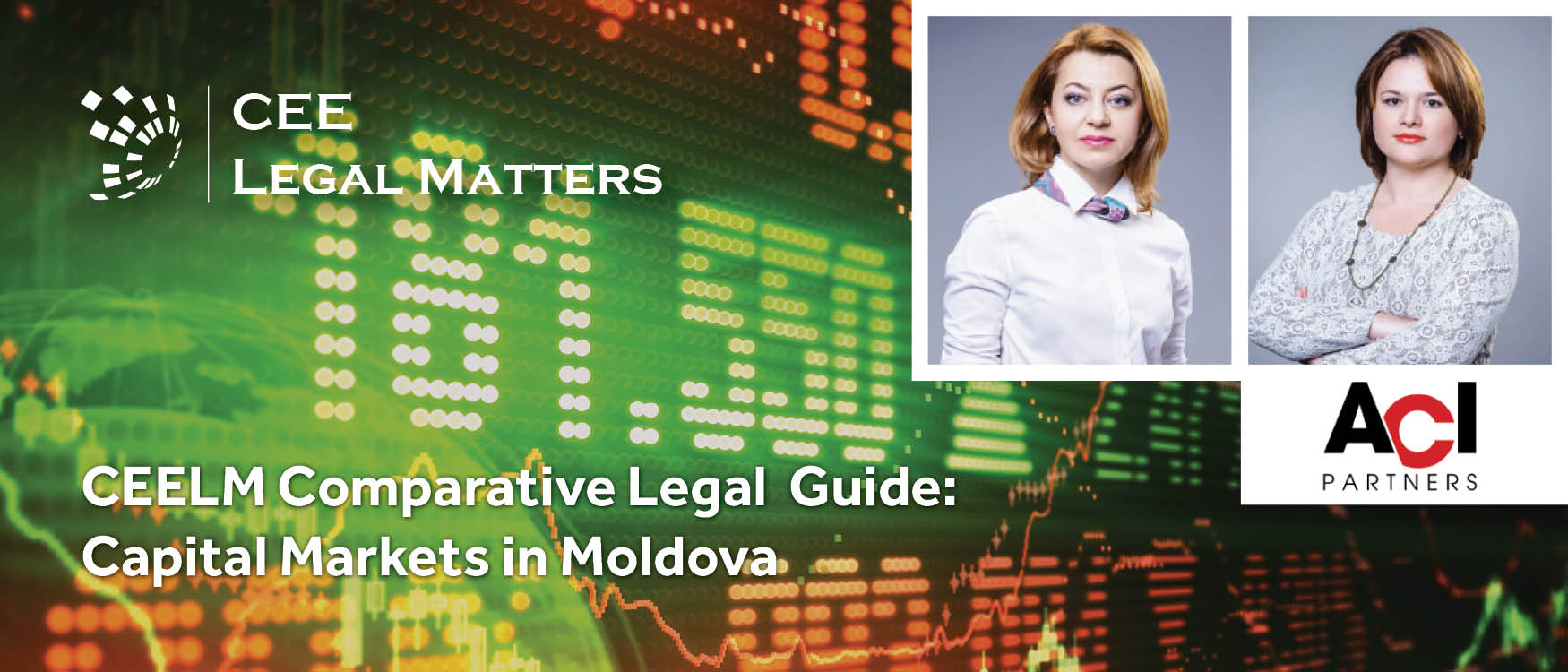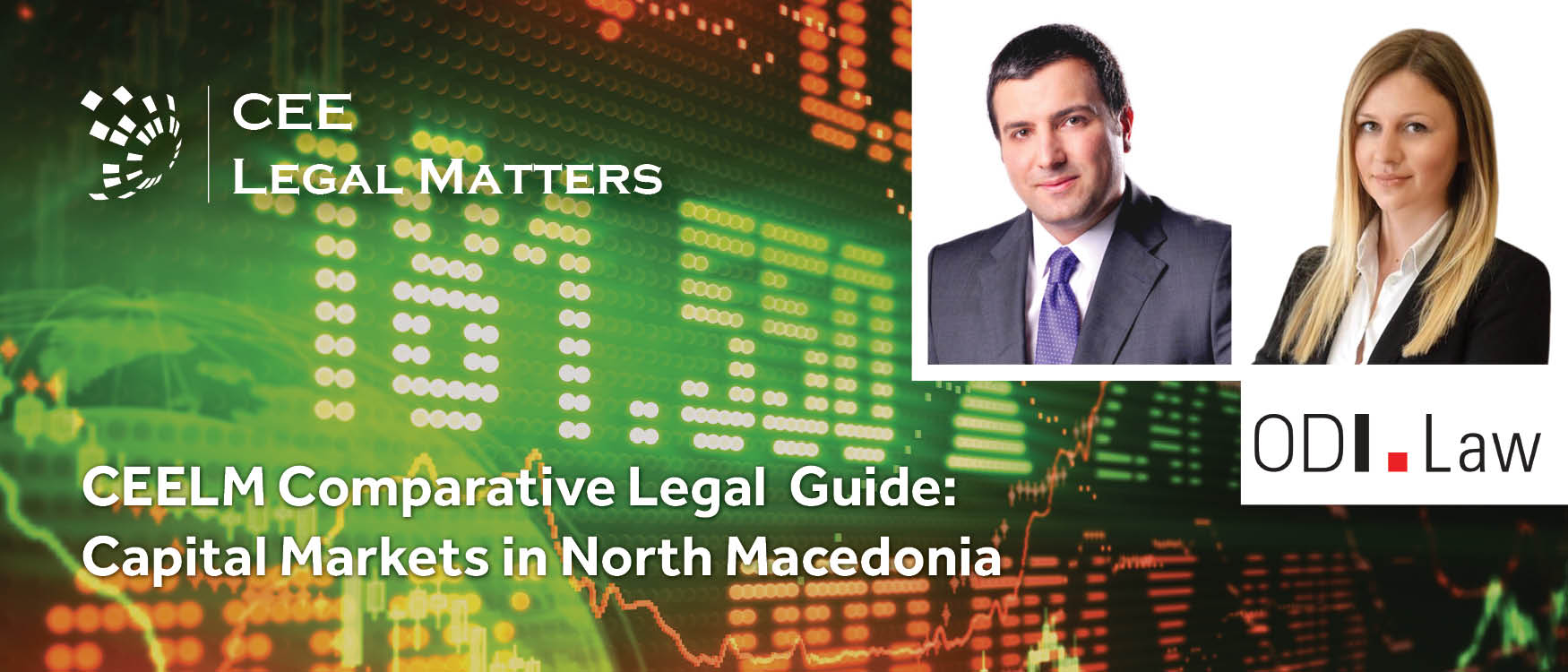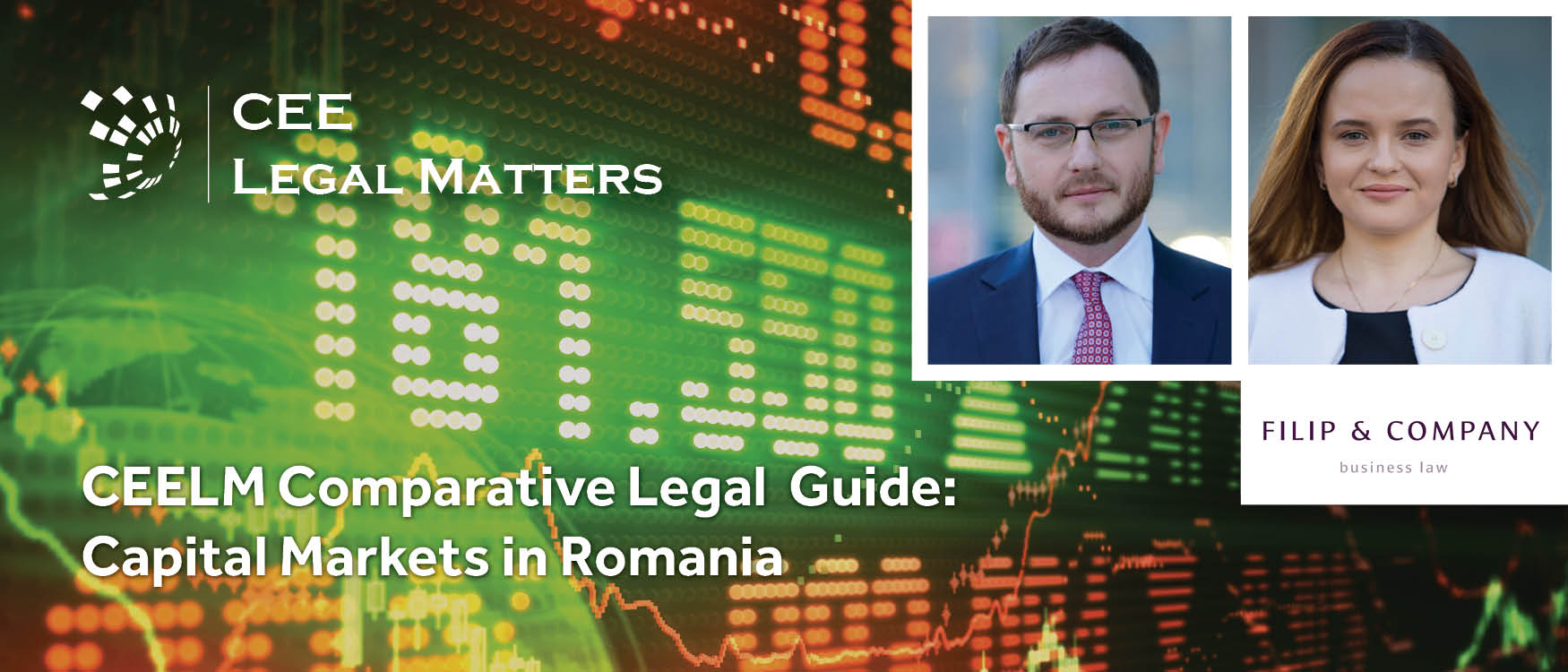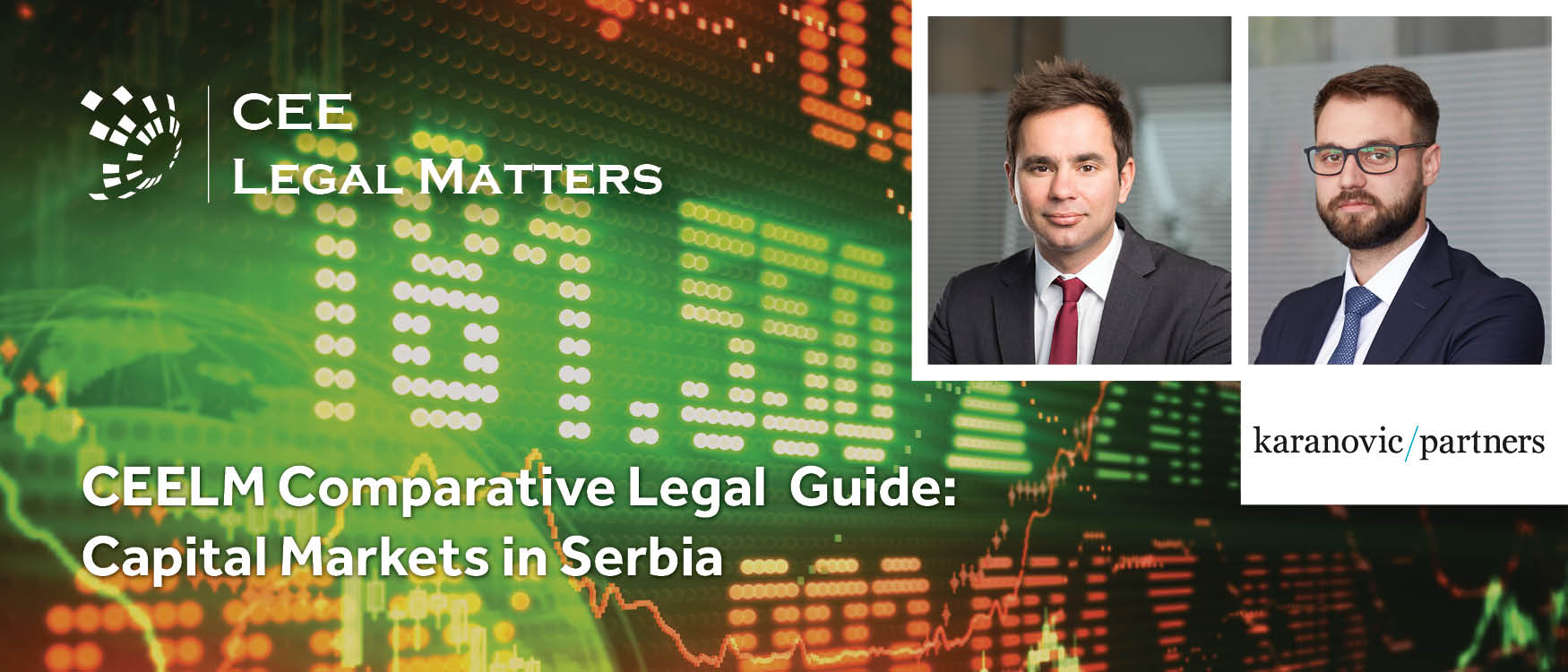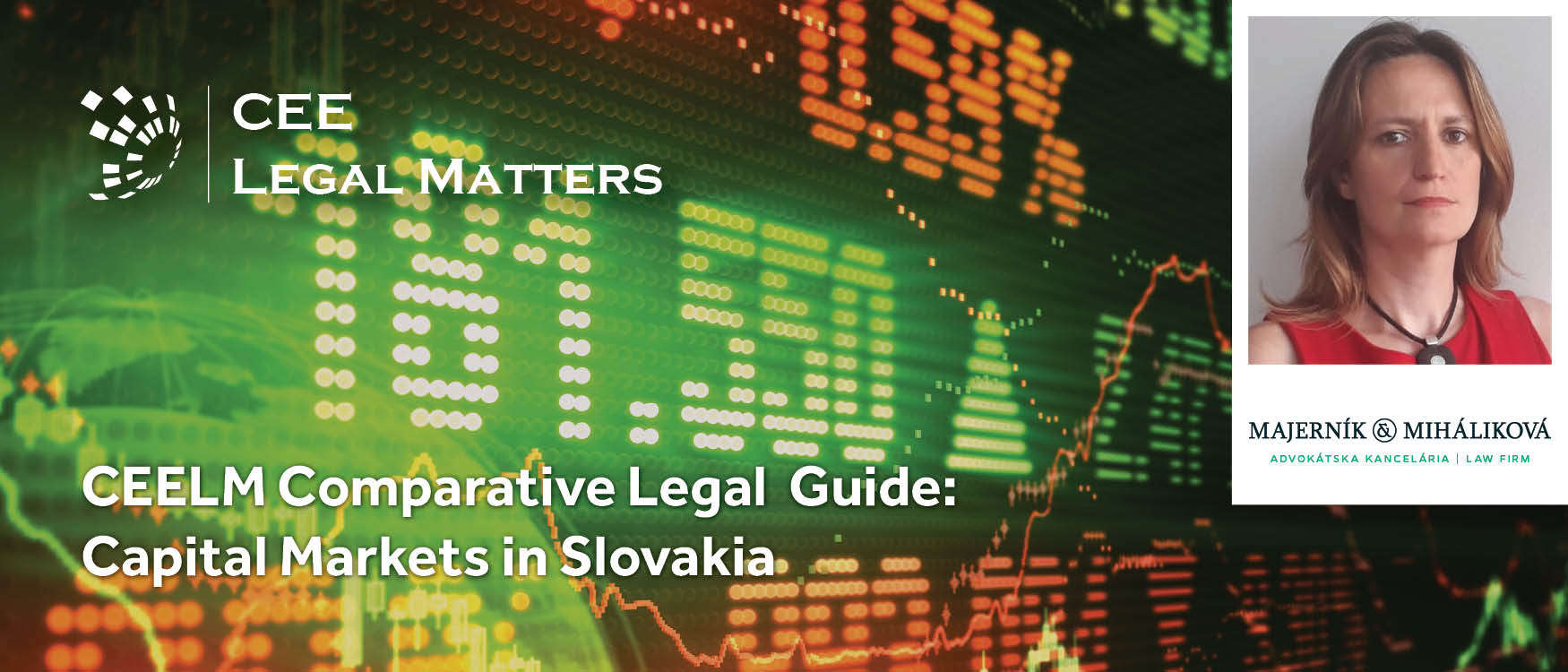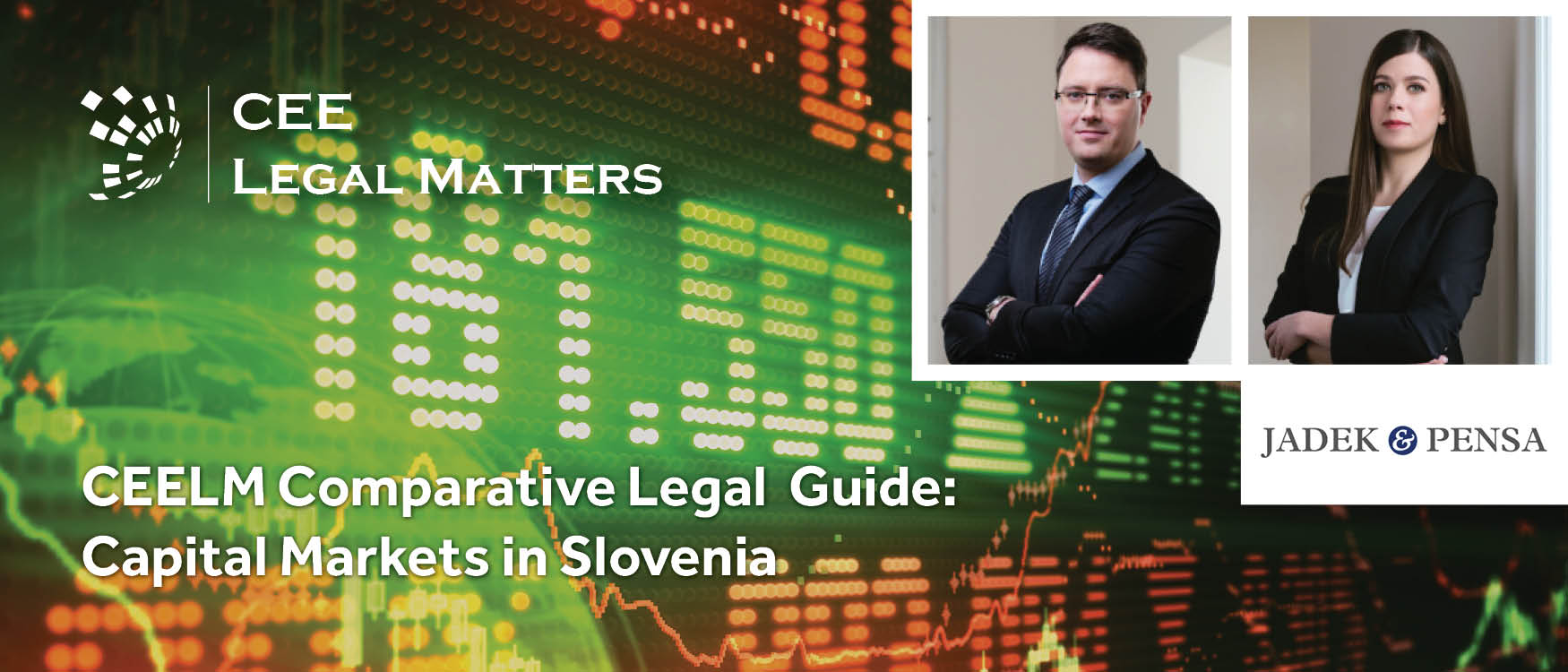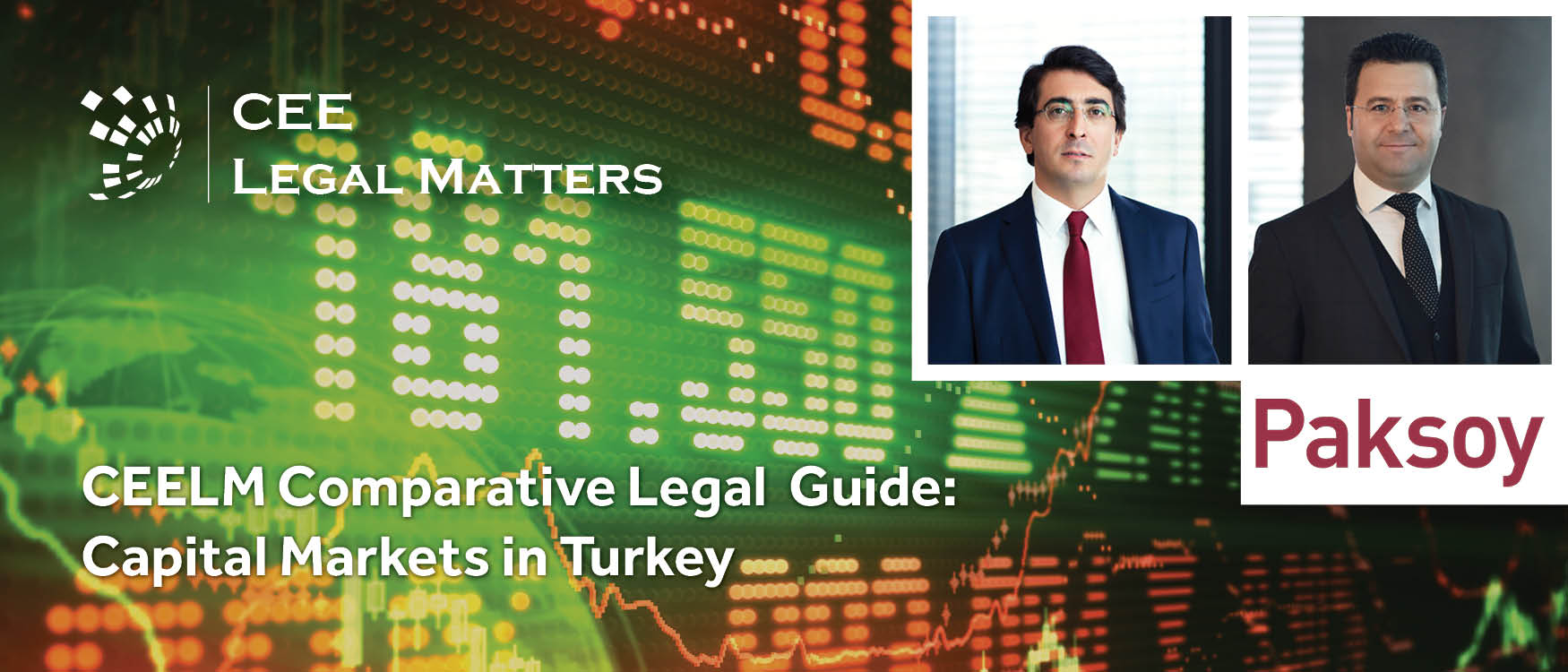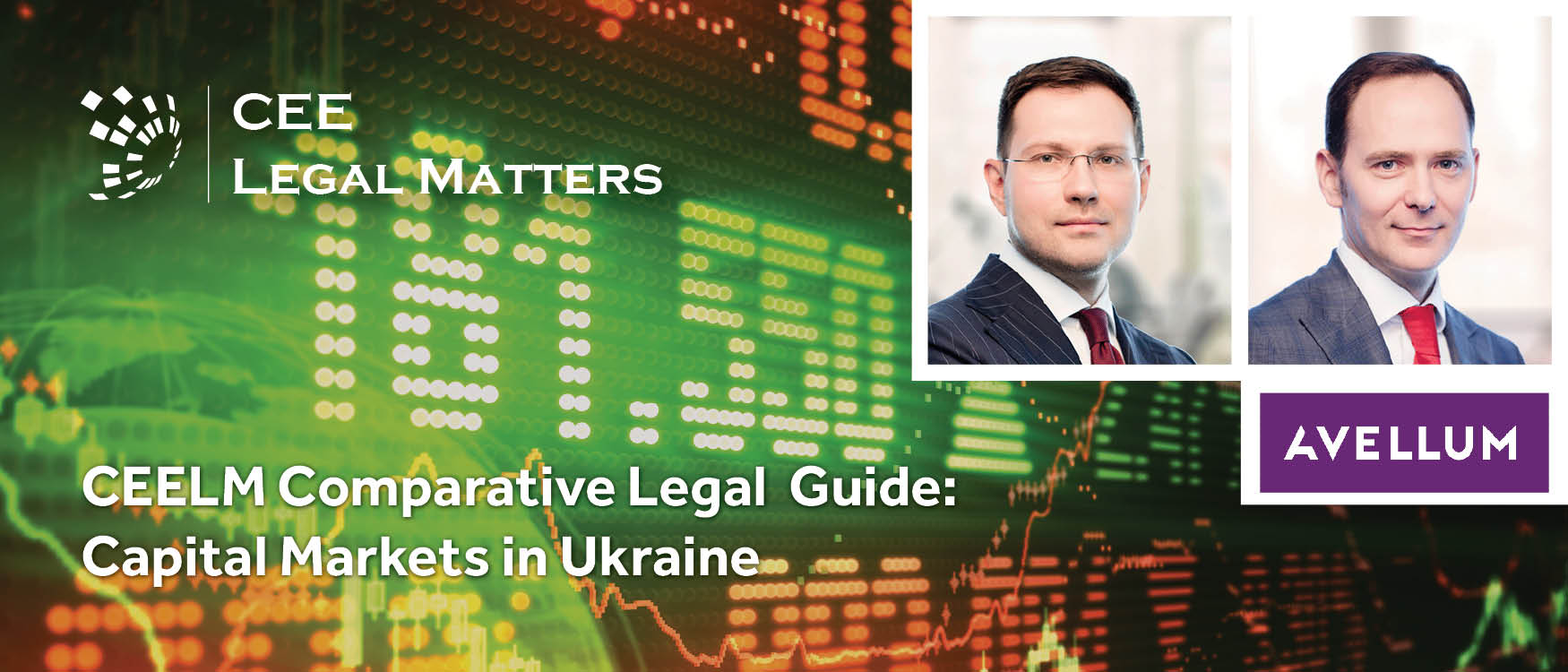Contributed by Rymarz Zdort.
1. Market Overview
The Warsaw Stock Exchange (the “WSE”) is the biggest exchange in Central and Eastern Europe and organises trade on one of the fastest-growing capital markets in Europe.
The WSE was Europe’s third-biggest market by the number of IPOs in 2017 (on a par with the Spanish exchange BME). The total value of initial public offerings (“IPO”) on the WSE was over EUR 1.8 billion in 2017, the highest since 2011. The IPO of Play Communications SA on the WSE was the eighth-biggest European IPO in 2017. In 2018 and 2019, a significant decline was observed in terms of IPO deal count and deal volume. The WSE recorded 20 and 16 IPOs in 2018 and 2019 respectively. The total value of offers on the WSE (in total on the regulated market and NewConnect) amounted to PLN 65.9 million (EUR 15.4 million) in 2019. It means a decrease of approximately 80 percent compared to 2018, which was the weakest year in terms of total value offers since 2003, according to the report “IPO Watch Europe 2019” prepared by the consulting company PwC.
According to WSE data, corporate bonds issued by 116 issuers were listed on Catalyst in 2019 with PLN 68.7 billion in debt capital raised. A significant portion of the bonds issued by Polish financial institutions and blue chip companies, especially those issued in EUR and other foreign currencies, are listed on foreign stock exchanges, in particular the Luxembourg stock exchange.
2. Overview of the local stock exchange and listing segments (markets)
The WSE, being the only Polish stock exchange, organises the trade of financial instruments on both a regulated market and a non-regulated market. In addition to that, there is also a part of a debt financial instruments market that is organised by BondSpot S.A. (“BondSpot”), a member of the WSE’s capital group.
With respect to the regulated market operated by the WSE, such market has two segments: the Main Market and the Parallel Market. The Main Market, which is regarded as the “official exchange market” in Poland within the meaning of the Financial Instruments Trading Act of 29 July 2005, is designed for companies that meet specific requirements, particularly with regard to their capitalisation, sufficient dispersion of stock ownership (i.e. a minimum number of free-float shares) and disclosure of certain financial information. Conversely, the listing requirements applicable on the Parallel Market are less stringent; the Parallel Market is open to trading of financial instruments of companies with lower capitalisation, if compared to the Main Market companies, and lesser free-float requirements. As of 7 April 2020, there were 342 companies listed on the Main Market and 105 companies listed on the Parallel Market.
Outside the regulated market, the WSE organises the trade of financial instruments on the “NewConnect” market (“NewConnect”), operating as a “multilateral trading facility” (MTF) within the meaning of Directive 2014/65/EU of the European Parliament and of the Council of 15 May 2014 on markets in financial instruments (“MIFID II”). NewConnect has been designed as a platform in which companies with lower capitalisation, usually from the IT sector, may raise capital in the initial stages of their operation. NewConnect companies usually contemplate entering the Main Market or the Parallel Market upon achieving the required capitalisation and meeting other requirements.
In addition, the Polish capital market comprises a debt financial instruments market, broadly referred to as “Catalyst” (“Catalyst”). Within Catalyst, there are in total four segments: two of them being “regulated markets” within the meaning of MIFID and two of them operating as MTFs. The WSE operates two segments designed for retail investors (one in the form of the regulated market and one as an MTF) and BondSpot operates the remaining two segments, which are designed for wholesale investors.
3. Key Listing Requirements
3.1. WSE Main Market and the Parallel Market
The provisions of EU and Polish law provide for a number of specific requirements that must be met in order for a company’s shares to be eligible for listing on the WSE. These requirements vary, to a certain extent, depending on whether the shares are to be listed on the Main Market or on the Parallel Market, with the requirements for listing on the Parallel Market being less stringent than those for the Main Market. In general, and in line with the practice of other European jurisdictions, the listing requirements relate to the company’s organisational form, capitalisation and shareholding structure, as well as require the adoption of specific resolutions by the company’s general meeting, the dematerialisation of its shares, the preparation, approval by a competent authority (if required) and publication of a prospectus or other offering/listing document, and formal resolutions of the WSE’s management board on the admission of the shares to trading on the WSE and the introduction thereof to listing on the WSE.
As regards the requirements for listings on the Main Market and the Parallel Market, these include, among other things, the following:
(i) organisational form: the company to be listed must operate in the form of a joint-stock company or in the equivalent form for non-Polish issuers, which means that the company must first undergo a transformation process if it has been incorporated in another legal form;
(ii) minimum capitalisation: the value of all of the shares in the company and the forecasted market price must equal at least EUR 15 million;
(iii) minimum free-float: the shareholders of the company that each hold shares representing less than 5% of the votes exercisable at the general meeting of the shareholders should in total hold (a) at least 15% of the shares referred to in the application for admission to WSE listing, and (b) at least 100,000 of the shares referred to in the application for admission to WSE listing, and the value thereof should amount to at least EUR 1 million (calculated based on their most recent sale/issue price);
(iv) no bankruptcy or liquidation proceedings may be underway with respect to the company; and
(v) the transferability of the shares may not be restricted.
In respect of a listing on the Main Market, in addition to the requirements set forth above, the following requirements also apply:
(i) the application for the admission to trading on the Main Market must apply to all of the shares of the same type (e.g. ordinary shares);
(ii) minimum free-float: the shareholders of the company that each hold shares representing less than 5% of the votes exercisable at the general meeting of the shareholders should in total hold (a) at least 25% of the shares referred to in the application for admission to WSE listing, and (b) at least 500,000 of the shares referred to in the application for admission to WSE listing, and the value thereof should amount to at least EUR 17 million (calculated based on their most recent sale/issue price); and
(iii) the company must have published its audited financial statements for a period of at least three consecutive years prior to the date of the application for admission to trading on the WSE.
In general, apart from the above, the listing of a company on the WSE (on both the Main Market and Parallel Market) also requires the drafting and approval of a prospectus (which is discussed in detail below) by the Polish regulator, i.e. Polish Financial Supervision Authority (the “PFSA”), as well as the adoption of specific resolutions by the company’s general meeting, including a resolution on the application for admission to the trading on the WSE.
The shares in the company must be dematerialised, which also requires: (i) the adoption of a resolution relating thereto by the company’s general meeting; and (ii) the execution of an agreement between the company’s management board and the National Depositary of Securities (the “NDS”) pursuant to which the shares to be offered by way of a public offering and/or listed will be registered in the depository for securities maintained by the NDS. The listing process is finalised by way of the management board of the WSE adopting resolutions on the admission and introduction of the company’s shares to trading on the WSE.
3.2. NewConnect
The requirements for listing on NewConnect are less stringent than those for the WSE Main Market and Parallel Market listings.
There are important differences between listing on NewConnect listing and the WSE Main Market and Pararell Market, in particular with respect to the minimum free-float requirement. Accordingly, at least 15% of the shares referred to in the application for admission to listing on NewConnect must be held by no fewer than ten shareholders, and each of such shareholders may hold no more than 5% of the total number of the votes exercisable at the company’s general meeting. The company applying for admission to listing on NewConnect is required to publish the audited financial statements for the year prior to the date of the application for admission.
3.3. Catalyst
The introduction of bonds to listing on the debt financial instruments market, i.e. Catalyst, requires the satisfaction of similar requirements as with respect to shares. Such requirements include the following: (i) bonds may only be issued by specific entities (including limited liability companies, joint-stock companies, limited joint-stock partnerships and municipalities) and must be in dematerialised form; (ii) the publication of an information document (a prospectus or an information memorandum), which, subject to certain exceptions, must be approved by the Polish regulator; (iii) the transferability of the bonds may not be restricted; and (iv) no bankruptcy or liquidation proceedings may be underway with respect to the bond issuer.
4. Prospectus Disclosure
The legal framework pertaining to disclosure rules on the capital and debt securities offerings in Poland are regulated mainly on the European Union level with the cornerstone legal act being Regulation (EU) 2017/1129 (“Prospectus Regulation”) and delegated acts (Commission Delegated Regulations 2019/980 and 2019/979) connected therewith, which are applicable directly throughout the European Union and lay down, among other things, the requirements to be complied with when drawing up prospectuses or other offering documents, as well as the requirements related to their approval by the relevant authorities and their dissemination to the public. Certain additional requirements within the scope not regulated by the Prospectus Regulation and the Commission Delegated Regulations under the Prospectus Regulation and where permissible thereunder are also included in national regulations, in particular the Polish Act on Public Offerings, Conditions Governing the Admission of Financial Instruments to Organised Trading and Public Companies of 29 July 2005 as amended (the “Public Offering Act”). In addition, the guidelines of the European Securities and Markets Authority (the “ESMA”) relating to the prospectus (such as Q&A on the Prospectus Regulation or risk factors) and certain guidelines issued by the Polish regulator as well as established market practice have an impact on the prospectus disclosure.
The Prospectus Regulation is applicable to the offer of securities to the public, which is understood as a communication to persons (not applicable to offers addressed to one person/entity) in any form and by any means, presenting sufficient information on the terms of the offer and the securities to be offered, so as to enable an investor to decide to purchase or subscribe for those securities, whereby such offer might be performed also through placement of securities through financial intermediaries.
In principal, the above-mentioned offers, as well as admissions of securities to trading on the regulated market, trigger the obligation to publish a prospectus; however, the Prospectus Regulation provides for certain exemptions pursuant to which:
(i) it is not applicable to certain securities, including inter alia: units issued by collective investment undertakings other than the closed-end type or certain state-issued or guaranteed securities;
(ii) it is not applicable to offers, the total consideration for which in the EU does not exceed EUR 1 million calculated over a period of 12 months (additionally, the Prospectus Regulation allows member states to exempt from the prospectus obligation offers the value of which is between EUR 1 million and 8 million; in the case of Polish regulations, the exemption relates to offers under EUR 2.5 million);
(iii) the prospectus obligation is not applicable to certain offers, including: (i) offers addressed solely to qualified investors; offers addressed to fewer than 150 addresses per member state other than qualified investors; offers of securities, the nominal value of which amounts to at least EUR 100,000 per security; offers of securities whereby each investor will acquire securities for a total consideration of at least EUR 100,000; and (ii) provided that a special information document is published, securities offered in connection with a takeover by means of an exchange offer; securities offered, allotted or to be allotted in connection with a merger or division; offers of dividend shares to the existing shareholders; and offers addressed to the management or employees;
(iv) the prospectus obligation is not applicable to certain admissions of securities to trading on the regulated market, including: (i) securities fungible to securities already admitted to trading (below 20% of the securities admitted to trading over the period of 12 months); shares resulting from the conversion/exchange of other securities of from the exercise of the rights conferred thereunder; and (ii) provided that a special information document will be published, securities offered in connection with a takeover by means of an exchange offer; securities offered, allotted or to be allotted in connection with a merger or division; offers of dividend shares to the existing shareholders or shares to be offered thereto free of charge; and offers addressed to the management or employees,
whereby in principal, the above exemptions might be applied jointly.
With respect to additional disclosure requirements under Polish securities regulations, the Public Offering Act imposes, inter alia, the following obligations:
(i) with respect to offers of securities in the territory of EU, the total value of which ranges between EUR 100,000 and 999,999 (over a period of 12 months) - the obligation to publish an information document which will include a responsibility statement from the issuer, information on material risks factors, and basic information on the issuer, including financial information, and the intended use of the proceeds from the issue of securities;
(ii) with respect to offers of securities in the territory of EU, the total value of which ranges between EUR 1,000,000 and 2,499,999 (over a period of 12 months) – the obligation to publish an offering memorandum in the form of a single document;
(iii) with respect to offers of securities addressed to less than 150 persons per member state other than qualified investors, where the number of addresses, together with the number of addresses to whom analogous (less than 150 addresses) offers of the same type of securities were addressed over the period of the last 12 months, exceeds 149 – the obligation to publish an offering memorandum being subject to approval by the PSFA.
In addition to standard offering documents such as a prospectus (in the form of a single document or a set of documents comprising a registration document, an offer document and a summary) or an offering memorandum, the Prospectus Regulation introduced a so-called “EU growth prospectus” applicable mainly to small and mid-sized enterprises allowing for a simplified disclosure obligations regime, and thus reducing the cost of the offering.
Additionally, in case of larger offers addressed to international institutional investors, including offers structured in compliance with Regulation S and Rule144A, the issuers usually prepare an International Offering Circular (the “IOC”), which is an offering document prepared in English for the purpose of advertising activities and offering securities to international investors outside Poland. In general, the IOC contains the same information as a prospectus prepared in Polish without detailed information on terms of Polish retail offering, and which may include additional information resulting from the requirements of foreign disclosure regimes or market practice for international offerings (like information required by Industry Guides issued by the US Securities and Exchange Commission). The IOC is not subject to the approval of the PFSA or of any other registration or notification obligations.
The format of the prospectus and the scope of the disclosure included therein is set forth in the Prospectus Regulation, the Commission Delegated Regulations 2019/980 and 2019/979 connected therewith as well as recommendations and guidelines issued by the ESMA. Also, certain guidelines issued by the Polish regulator as well as established market practice have an impact on the prospectus disclosure. A prospectus subject to the approval of the PFSA should, in principal, be drafted in Polish, but in the event that a public offer or admission to trading on a regulated market is to take place exclusively in a member state other than Poland, the prospectus may be drawn up either in Polish or English. Additionally, with respect to a public offer or admission to trading on a regulated market in Poland as the host state, a prospectus disseminated to the public must be drawn up in Polish or English or translated into one of such languages, whereas in case of a prospectus prepared in English, a Polish translation of the summary must be published.
5. Prospectus Approval Process
In principle a prospectus or other offering document of a Polish issuer subject to approval based on EU or national regulations must be submitted to the PFSA through the intermediation of an investment firm.
Unlike in certain other European jurisdictions, a prospectus submitted to the PFSA must be signed and fully complete, i.e. must include all of the relevant information, schedules, financial statements auditor’s report and representations required under applicable laws. Thus, the issuer and/or the offerors are liable for the content thereof as of the first filing of the prospectus. The PFSA does not review and comment on advanced drafts of the prospectus prior to its approval; nonetheless, it is possible to organise a courtesy meeting with the regulator in order to discuss the structure of the offering, the envisaged timeline of the process or the way of supplementing the prospectus by more recent financial information during the approval process.
The whole prospectus approval process takes approximately two to three months, depending on the type of offering (initial public offering or secondary public offering) or the industry of issuer. Prior to the approval of the prospectus, the PFSA may provide comments or demand modifications to the prospectus or additional disclosure, often several times (in practice, three to four rounds of comments). After all of the PFSA’s comments have been addressed and the prospectus has been amended/supplemented accordingly, the PSFA issues an administrative decision on the approval of the prospectus.
Notwithstanding the fact that the Prospectus Regulation and delegated acts (Commission Delegated Regulations 2019/980 and 2019/979) connected therewith as well as the ESMA’s recommendations and guidelines intended to unify the disclosure regimes throughout all of the EU member states, it must be noted that with respect to offering documents being subject to the approval of the PFSA, there are some minor differences and additional requirements resulting from the market practice peculiarities established by the PFSA. For instance, with respect to information on material agreements to be disclosed in the prospectus, despite the fact that the EU regulations require only information on the material agreements concluded by the issuer otherwise than in the ordinary course of business, the PFSA may require disclosure relating to the material agreements concluded in the ordinary course of business or detailed disclosure of related-party transactions.
The PSFA also exhibits a greater degree of scrutiny in terms of the details of the prospectus disclosure. There are certain matters that are especially scrutinized by the PFSA, which may result in detailed questions being raised or even changes to the substance of such matters being requested, including, for example: related party transactions, liquidity, high financial leverage, the functioning and actual oversight of a supervisory board or the rules of remuneration of the members of the governing bodies of the issuer, and post offering preferential rights of shareholders.
In general, the prospectus can be published and the offer of securities in Poland can be commenced only following the approval of the prospectus by the PFSA or its notification to the PFSA by the competent regulatory authority approving the prospectus in a different jurisdiction (under the EU passporting procedure). The prospectus may be made available to the public in different ways, including, but not limited to, the most common option - publication on the issuer’s website.
The Public Offering Act regulates liability for the information contained in a prospectus and the supplement thereto being true and accurate and for the prospectus and the supplement thereto not omitting anything that could affect their import, in particular with respect to the authenticity, accuracy and completeness of the information contained in the foregoing documents. The above-mentioned liability rests on, among others:
(i) the issuer – for all information;
(ii) the offeror – for information about the offeror and the sale of securities conducted thereby, and if an offeror is a parent entity of the issuer or exerts a significant influence thereon (shareholding of 20% and more) – for all information; and
(iii) the entity or person preparing or participating in the preparation of information – for the information it has prepared or in the preparation of which it participated (in line with market practice, the legal counsel is responsible for the parts relating to a description of the legal environment, and the offering agent or manager, for the terms and conditions of the public offering in Poland),
whereby in any case the civil liability depends on: (i) the fault of the above entities; and (ii) on the investor proving loss and the link between such loss and the omission or inaccuracy of information.
A prospectus needs to indicate the responsible entities together with the declarations thereof that, to the best of their knowledge, the information contained in the prospectus is consistent with the state of facts and the prospectus does not omit anything that could affect its import and, in particular, that the information included therein is true, accurate and complete. In practice, such declarations indicate the specific information for which a given entity is liable (all information or information included in specified chapters of the prospectus). Additionally, in order to limit the potential liability of certain entities (i.e. underwriters and managers), especially in the case of larger and international offerings, due diligence processes are conducted with respect to the issuer and its operations and additional documents are issued by auditors (comfort letters) or legal counsel (legal opinions and disclosure letters).
6. Listing Process
In general, the listing of securities on the regulated market in Poland requires their dematerialisation and the admission to trading by the relevant market operator.
Securities that are subject to a public offering within the territory of Poland or those subject to admission to trading on the regulated market in Poland cease to exist in certificate form upon their registration in the securities deposit pursuant to an agreement with the NDS, the Polish depositary and settlement institution (the securities cease to exist in certificate form and, thus, exist only in book-entry form), except for securities offered to the public that will not be subject to admission to trading on the regulated market or introduced exclusively to an alternative trading system (i.e. NewConnect) that may keep their certificate form, if the issuer so decides.
In order to conclude a registration agreement with the NDS, the issuer has to deposit with an investment firm operating in Poland the certificates representing the securities being the subject of the dematerialisation and submit an application that includes the respective authorisation to register the securities with the NDS in the form of a relevant corporate consent granted by the competent governing body of the issuer (for Polish issuers - general meeting of shareholders). The registration agreement is concluded based on the above-mentioned application and pursuant to a resolution of the management board of the NDS.
Following the satisfaction of the listing requirements described in the section “Key Listing Requirements” above, the issuer may apply for the admission and introduction to trading of securities on the relevant markets. With respect to shares to be admitted to trading on the regulated market operated by the WSE (both the Main and Parallel Market), following the formal application of the issuer, the WSE issues its decision by way of the adoption of resolutions first on the admission and then on the introduction of shares to trading and sets the first listing date within approximately 7 days of the submission of the application by the issuer (within approximately 10 days after pricing of the offering). Unlike certain other markets, the settlement of equity offerings in Poland is not based on a delivery-versus payment principle. Investors (both retail and institutional investors) pay for the shares prior to the final share allocation and the shares allocated to such investors are registered on their securities accounts around one week upon payment, but always prior to the first listing day on the WSE. The detailed timing for admission and introduction of shares to trading is usually pre-agreed with the WSE.
The applications for admission to trading and introduction to listing on the WSE are standard documents that are usually submitted directly following the final allocation of the shares to investors. The issuers have to attach to such application a number of documents, including the opinion of the WSE participant (e.g. an investment firm being a WSE member), a prospectus or other offering document and a resolution of the NDS on the registration of the shares with the depository operated by the NDS. Unlike in the case of certain other foreign markets, the conditional trading of shares on the WSE prior to the first listing day is not permitted. In respect of newly issued shares it is possible to list on the WSE rights to shares, being securities representing rights to newly issued shares, before their registration by the registry court.
7. Corporate Governance
When preparing for an initial public offering of securities, the issuer should bear in mind the necessity to adjust its corporate governance rules in order to comply with the applicable laws (corporate governance rules applicable following the admission of securities to trading on the regulated market), the corporate governance rules developed by the WSE applicable to companies listed thereon and the investors’ expectations.
Below please information on the corporate governance principles applicable to issuers, the shares in which are to be listed on the regulated market operated by the WSE. Additionally, the PFSA has adopted special corporate governance rules for entities being subject to its supervision, such as banks, investment funds, general pension funds, brokerage houses and insurance companies.
7.1. Articles of association
In principle, the articles of association (the “AoA”) of companies, the shares in which are to be listed on the regulated market in Poland should constitute a legal framework that will allow for transparent rules of decision making and, to a certain extent, for the lack of discriminatory preferences that are not based solely on the proportionality of the shareholding of a given investor. In particular, the AoA:
(i) should not provide for any special rights of shareholders; however, it is permitted to introduce limited personal rights to appoint supervisory board members;
(ii) should not contain restrictions on voting rights; and
(iii) can contain provisions on shares preferred in terms of voting rights; however, such shares cannot be publicly offered, or admitted and introduced to trading on the regulated market.
7.2. Supervisory Board
The supervisory board of a public company (i.e. including issuers of bonds listed on the regulated market) should comprise at least five members, at least two of whom should meet the independence criteria set forth in the Act of 11 May 2017 on statutory auditors, auditing firms and on public supervision (the “Act on Statutory Auditors”) and the WSE Best Practices that refer to the criteria set forth in Annex No. II to the Commission Recommendation of 15 February 2005, on the role of non-executive or supervisory directors of listed companies and on the committees of (supervisory) the boards thereof, whereby usually, it is recommended that independent members of the supervisory board meet all of the above criteria.
In practice, prior to the appointment, a candidate for an independent member of the supervisory board submits to the issuer a written statement on the fulfilment of the criteria of independence.
The structure of the supervisory board of companies being the issuers whose securities are admitted to trading on the regulated market should include at least an audit committee, whereby a remuneration and nominations committees are optional. Pursuant to the Act on Statutory Auditors, the audit committee should comprise at least three members, of which more than half (including the chairman) will need to meet the independence criteria set forth in the Act on Statutory Auditors. Moreover, at least one member will need to have knowledge and skills in the field of accounting and at least on member will need to have knowledge and skills in the sector in which the issuer conducts its business. The requirements regarding the functioning and composition of an audit committee apply also to companies that intend to apply for the WSE listing (which is understood as the moment of the adoption of a resolution by the general meeting of the shareholders regarding the listing).
7.3. Approval of related party transactions
In the case of issuers the shares in which are admitted to trading to the regulated market operated by the WSE (with the exception of foreign issuers), pursuant to the Public Offering Act, the execution of a transaction between such issuer and its related party (within the meaning of IAS 24 “Related Party Disclosure”) the value of which exceeds 5% of the total assets of the issuer will require the obtainment of the consent of its supervisory board, with the exception of: (i) transactions executed on an arm’s length basis in the ordinary course of business; (ii) transactions executed by the issuer with its subsidiaries, provided that the issuer is the sole shareholder of the subsidiary with which it has executed a transaction; and (iii) transactions regarding the payment of remuneration to members of the governing bodies in accordance with the remuneration policy within the meaning of the Public Offering Act (please see “Say on Pay” below). Additionally, the AoA may provide that the consent to conclude an agreement with a related party may also be granted by the general meeting of the shareholders. In the above scope, the provisions of the Public Offering Act implement EU Directive 2017/828.
For disclosure obligations relating to the related party transactions see section “Ongoing Reporting Obligations (Life as a Public Company)”.
7.4. Say on Pay
In the case of issuers the shares in which are admitted to trading to the regulated market operated by the WSE (with the exception of foreign issuers and certain financial institutions), the remuneration of members of the governing bodies of the issuer should be paid exclusively in accordance with the remuneration policy adopted by the general meeting of the shareholders, which should include, among others: (i) a description of the fixed and variable components of remuneration, as well as bonuses and other cash and non-cash benefits; (ii) a description of the terms of contracts; (iii) an explanation of how the pay and employment conditions of employees of the issuer other than members of the governing bodies were taken into account when establishing the remuneration policy; and (iv) an explanation of how the remuneration policy contributes to the implementation of the issuers’ business strategy, long-term interests and stability. In the above scope, the provisions of the Public Offering Act implement EU Directive 2017/828.
For disclosure obligations relating to the remuneration policy see section “Ongoing Reporting Obligations (Life as a Public Company)”.
7.5. WSE Best Practices
In accordance with the internal regulations of the WSE, in order to ensure the transparency of operations and to build investor confidence, issuers listed on the Main Market of the WSE should observe the principles of corporate governance set out in the Best Practices for GPW Listed Companies 2016 (the “WSE Best Practices”) that have been developed in accordance with the European Commission Recommendation of 9 April 2014 on the quality of corporate governance reporting (2014/208/EU). The WSE Best Practices are to be followed on a “comply or explain” basis, and thus issuers do not have to comply with all of the rules set out therein; however, the intention of the scope to the extent of which the WSE Best Practices will be complied with must be included in the prospectus. Apart from this, WSE-listed issuers are required to provide a statement on the compliance with the WSE Best Practices in their annual report and to notify to the market, by way of a current report, of any decision taken with regard to any permanent or incidental incompliance with the WSE Best Practices.
The WSE Best Practices recommendations and detailed principles pertain to: (i) Disclosure Policy and Investor Communications; (ii) Management Board and Supervisory Board; (iii) Internal Systems and Functions; (iv) General Meeting and Shareholder Relations; (v) Conflict of Interest and Related Party Transactions; and (vi) Remuneration.
Additionally, a simplified and analogous version of the WSE Best Practices is applicable to issuers the shares in which are listed on NewConnect, an alternative trading system outside the regulated market operated by the WSE.
8. Documentation and Other Process Matters
8.1. Stabilisation
In connection with an offering in Poland it is possible to take stabilisation actions under which one or more of managers acting as the stabilisation manager(s) will be able to acquire shares or other securities on the regulated market operated by the WSE or on another market in order to stabilise their price at a level higher than the level that would have been established in different circumstances. Stabilisation aims to address potential price fluctuations in the first days following the first listing day (for initial offerings) or the pricing of the offering (for secondary offering), and support the market price but only if such price drops below the final offer price. Therefore, stabilisation may not be used to increase the price in excess of the final offer price.
Stabilisation is not a common element of public offerings in Poland. Historically, stabilisation was envisaged and carried out in relation to the largest offerings in Poland that also combined the private placements of shares to international institutional investors.
The principles of stabilisation transactions are set out in the MAR and in Commission Delegated Regulation (EU) 2016/1052 of 8 March 2016 supplementing Regulation (EU) 596/2014 of the European Parliament and of the Council with regard to regulatory technical standards for the conditions applicable to buyback programs and stabilisation measures (the “Stabilisation Regulation”). In addition, the detailed terms of stabilisation are set out in the underwriting agreement/placement agreement and/or a separate stabilisation agreement entered into by a selling shareholder or an issuer and a stabilisation manager. The prospectus disclosure relating to stabilisation is defined in the Prospectus Regulation and the Commission Delegated Regulations thereto.
Under the MAR and the Stabilisation Regulation, stabilisation is exempted from the prohibition on insider dealing, market manipulation and unlawful disclosure of inside information so long as:
(i) the undertaking of the stabilisation is for a limited period (in respect of shares, the time period is no longer than 30 calendar days, whilst in respect of bonds it is no longer than 60 days);
(ii) the relevant information prior to and post stabilisation is disclosed to the competent authority and to the market;
(iii) the required disclosure is made in the prospectus or other offering documents; and
(iv) the stabilisation is carried out in compliance with adequate limits with regard to price.
For example, within stabilisation transactions relating to shares, shares may be acquired by a stabilising manager within no more than 30 calendar days from the date of commencement of their listing or pricing date or final allotment date (depending on the type of offering) at a price no higher than the final offer price. A stabilisation manager, however, is not required to take any stabilisation actions, and any such actions may be stopped at any time.
Typically, the size of the stabilisation does not exceed 15% of the offering size (typically around 10% of the final offering size).
8.2. Stabilisation option (Greenshoe vs Brownshoe structure)
The greenshoe, brownshoe and overallotment options are not common elements of public offerings in Poland. Historically, as a mechanism enabling the settlement of, and accompanying, the stabilisation, they were used solely in relation to the largest offerings in Poland that also combined the private placements of shares to international institutional investors.
For certain regulatory reasons and tax risks, in those limited number of offerings that envisaged stabilisation, the structures were based either on a brownshoe (“reverse green shoe”) option or a Polish specific – conditional share purchase agreement, instead of a green shoe option, stock lending and overallotment.
A brownshoe or “reverse green shoe” option is a form of put option that gives the owner of the shares the right to sell the shares to a given party by a predetermined date and at a specified price. In other words, within the stabilisation period the stabilising manager acquires shares on the market at a price not higher than the final offer price, and then upon the lapse of the stabilisation period sells such shares back to a selling shareholder or an issuer under the put option.
A conditional share purchase agreement is an agreement between a selling shareholder and a stabilising manager pursuant to which after pricing, the selling shareholder sells to a stabilising manager shares in the pre-determined number usually corresponding to the number of shares finally allotted to foreign investors, however, not exceeding 10% or 15% of the offering size, subject to a condition subsequent that the shares are acquired by the stabilising manager in the course of the stabilisation transactions. The acquisition of the shares by a stabilising manager in the course of the stabilisation transactions, constituting the fulfilment of the above-mentioned condition subsequent, results in the transfer of the ownership title to such shares back to the selling shareholder in one or more transactions during or after the end of the stabilisation period.
The brownshoe or a conditional share purchase agreement has the same effect on share price as the regular greenshoe option but, instead of buying shares from the selling shareholder, the stabilising manager has the right to sell the shares back to the selling shareholder or issuer, but only if the share price falls below the offering price and the stabilising managers purchases the shares on the market.
The share transfers in the exercise of the stabilisation options are subject to tender offer-relating obligations that may impact their usage in transactions that may result in crossing the relevant thresholds. In principle, under Polish law crossing 33% or 66% of the total voting rights in a public company requires a launch of a mandatory tender offer for up to 66% or up to 100%, respectively, of the shares in such company.
8.3. Over-allotment and stock lending
An over-allotment is an option available to the managers that allows the sale of additional shares from what a selling shareholder plans to sell in an initial public offering or secondary/follow-on offering. The over-allotment option gives the managers the right, but not the obligation, to purchase from the issuer or the selling shareholder a specified number of additional shares beyond the number offered in the original offering at the offering price.
Due to the reasons mentioned above, a standard over-allotment structure based on the greenshoe option with stock lending is rather uncommon as regards Polish offerings.
9. Ongoing Reporting Obligations (Life as a Public Company)
Once the securities of a company have been admitted to trading on the WSE, the company becomes a public company within the meaning of the applicable laws, and thus, the subject to the disclosure obligations provided for in the provisions of both Polish and EU laws, including the provisions of the MAR. As of the date of the first listing of its shares, the company will, in particular, be required to disclose current and periodic information, inside information and certain information pertaining to its general meetings, corporate governance (i.e. its remuneration policy) and transactions with related parties, as well as to maintain a list of persons with access to inside information. In addition, the shareholders of such company who hold substantial blocks of its shares will be required to notify the company and the PFSA in the event of changes in their stock ownership.
As regards current information, under the Regulation of the Minister of Finance of 29 March 2018 on current and periodic information published by issuers of securities and conditions under which such information may be recognised as being equivalent to information required by the legal regulations of a state which is not an EU Member State (the “Reporting Regulation”), a public company listed on the WSE is required to publish a current report upon the occurrence of specific events such as, among other things, a change in the rights attached to the company’s securities, the appointment or removal of a managing or supervisory person, or the registration of an amendment to the company’s articles of association.
In addition, the Reporting Regulation also requires a public company listed on the WSE to publish quarterly, semi-annual and annual reports that will present the company’s financial information for a given accounting period, including, in particular, the financial statements for such period (with the requirement that the half-yearly financial statements are reviewed by independent auditors and annual financial statements are audited by independent auditors). In this respect, the disclosure obligations of WSE-listed companies are more complex than in other European jurisdictions. If a public company is a controlling company of a capital group, it will additionally be required to publish, within the periods specified above, consolidated quarterly, semi-annual and annual reports for the capital group.
With respect to “inside information”, as of the date of the application for the admission of the company’s securities to trading, the company will be required to comply with the directly applicable provisions of the MAR and publish any information having a significant impact on the price of the company’s securities. As required by the MAR, the company also needs to maintain a list of persons having access to inside information. Additionally, the company must disclose information regarding the transactions of the persons discharging managerial responsibilities and the persons closely associated with them.
WSE-listed companies incorporated in Poland are subject to additional disclosure obligations with respect to the convocation and organisation of their general meetings. The convocation of the general meeting of a Polish public company needs to be announced within the specified time period, include drafts of the resolutions to be adopted, and meet other specific requirements as to its contents and form of publication.
Apart from that, recently adopted Polish laws provide for additional disclosure obligations applicable to public companies and pertaining to the adoption and publication of a remuneration policy, as well as the publication of information about material related-party transactions. See section “Corporate Governance - Approval of related party transactions - Say on pay”.
The remuneration policy is to be published by a public company on its website. In addition, each year, the supervisory board of a public company is to prepare an annual remuneration report containing a comprehensive review of the total remuneration, including all benefits (regardless of their form), received by each member of the management or supervisory board in the last financial year pursuant to the adopted remuneration policy. Such report is to be subject to the advisory opinion issued by the company’s general meeting and published on the company’s website.
As regards the disclosure of material related-party transactions, public companies are required to publish on their websites information about certain transactions entered into with their related parties. This obligation pertains to transactions deemed to be “material”, i.e. to those exceeding 5% of the total assets of a company (with certain exceptions). The relevant disclosure needs to identify the related party, the value of the transaction made therewith and allow for an assessment as to whether the transaction was fair and reasonable from the perspective of the company and its shareholders who do not qualify as related parties.
Polish law also provides for disclosure requirements with respect to the shareholders of public companies listed on the WSE. In general, any shareholder who has reached or exceeded a specific threshold (or its ownership has decreased below such threshold) is required to notify the company and the Polish regulator about the occurrence of such event within a specific time period.
Disclosure obligations applicable to companies with securities listed on NewConnect and Catalyst are less stringent that those applicable to WSE-listed companies. In this regard, NewConnect-listed companies are required to publish current information upon the occurrence of specific events (with such reported events being similar to those that need to be reported by WSE-listed companies under the Reporting Regulation, including information regarding the convocation and organisation of general meetings). They are also under the obligation to publish periodic information in the form of quarterly and annual reports. These reports must include financial statements that, only in the case of annual reports, need to be audited by independent auditors.
Issuers of bonds listed on Catalyst are required to publish current reports upon, among other things, the issuance or redemption of their bonds, failure to pay off the bonds on the payment date, or regarding the convocation of the bondholders’ meeting. In addition, issuers publish periodic information in the form of semi-annual and annual reports (with the latter also being required to be audited by independent auditors).







